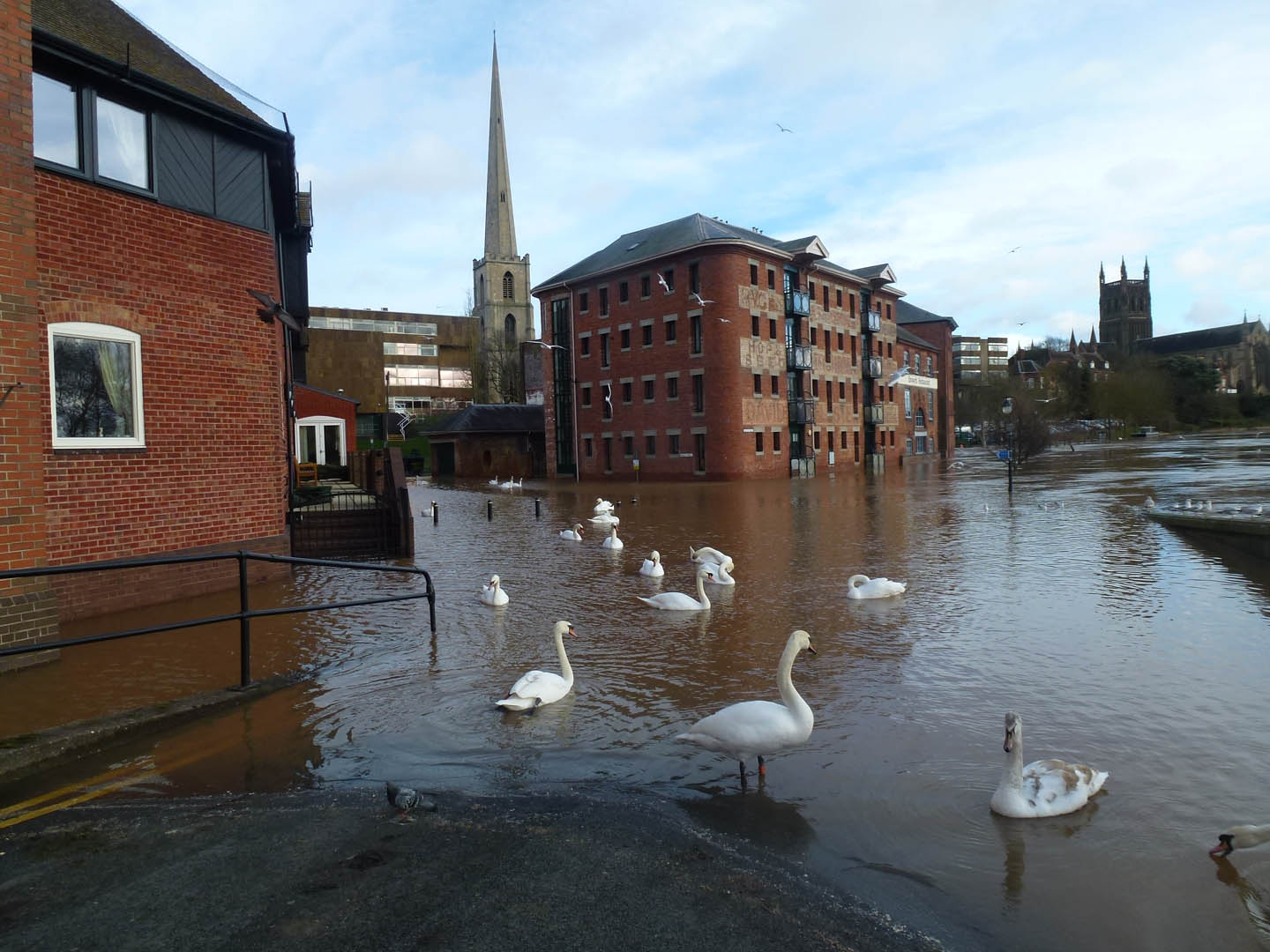Protect your home, business, and community from the impact of flooding this winter.
In Winter it is inevitable that parts of the UK will experience storms, which lead to flooding, so we all need to be prepared and focus on the actions we can take to protect, respond, and recover. Adapting to the growing risk can help increase our resilience and ultimately lessen the devastation that flooding brings.
Back in 2020 a succession of storms highlighted the devastating impact of flooding to homes, businesses, and communities. Storm Christoph, followed by Storm Dennis brought record rainfall and high river levels, resulting in hundreds of flood warnings being issued nationwide. This led to widespread disruption across the UK, in particular the North-west, Midlands and Wales.
Be more prepared and resilient
With thousands of properties flooded, residents forced to evacuate, and insurance claims totalling millions of pounds, the physical and economic impacts of flooding are clear to see. However, the long-term impacts of flooding are not as easy to identify, and such incidents can frequently lead to stress and mental health issues.
As efforts continue across the UK to defend and protect communities against flooding, climate change is bringing increased winter rainfall, thus increasing flood risk further. Therefore, there is an increasing acknowledgement that we must learn to live with floods by helping homeowners and communities to be more prepared and resilient.
What are the benefits of property flood resilience?
Taking steps to make your property more flood resilient can greatly reduce the impact and resulting damage of flooding. Simple resilience measures can also reduce recovery time and help those at risk of flooding secure affordable insurance.
There are a range of innovative resistance measures available that are far more effective than sandbags at limiting water entry and also reduce the damage caused by flood water when it enters a property. These recoverable measures include water resistant plaster on walls and replacing flooring with resilient and easy to clean surfaces, such as tiles rather than carpet to reduce damage. Electrical sockets may also be raised to a higher level, meaning that should the property flood, the electricity supply would not be lost.

Community support
Alongside such property flood resilience (PFR) actions, a vital element of being prepared for flooding is to have well-rehearsed flood emergency response plans, both personal and community focused. Providing community support and helping communities to be more prepared is crucial to improving resilience.
Encouraging the wider awareness and take-up of PFR were central themes to the recent Defra funded PFR Pathfinder projects, which we supported. Playing an integral role in both the Yorkshire and South-West pathfinders, we assisted in the development of valuable website content, videos and exhibition resources that highlight the support available and the benefits that can be achieved through PFR.


For more information about how we can help you better protect your home, business or community from the impacts of flooding, please contact Head of Water Management, Steve Thompsett.
You can find out more about PFR and obtain indicative costs for a range of property types and PFR measures using the Property Protection Advisor tool at the National Flood Forum. Advice and support for those at risk of flooding can also be found by visiting the National Flood Forum. Advice and support for those at risk of flooding can also be found by visiting the National Flood Forum.



